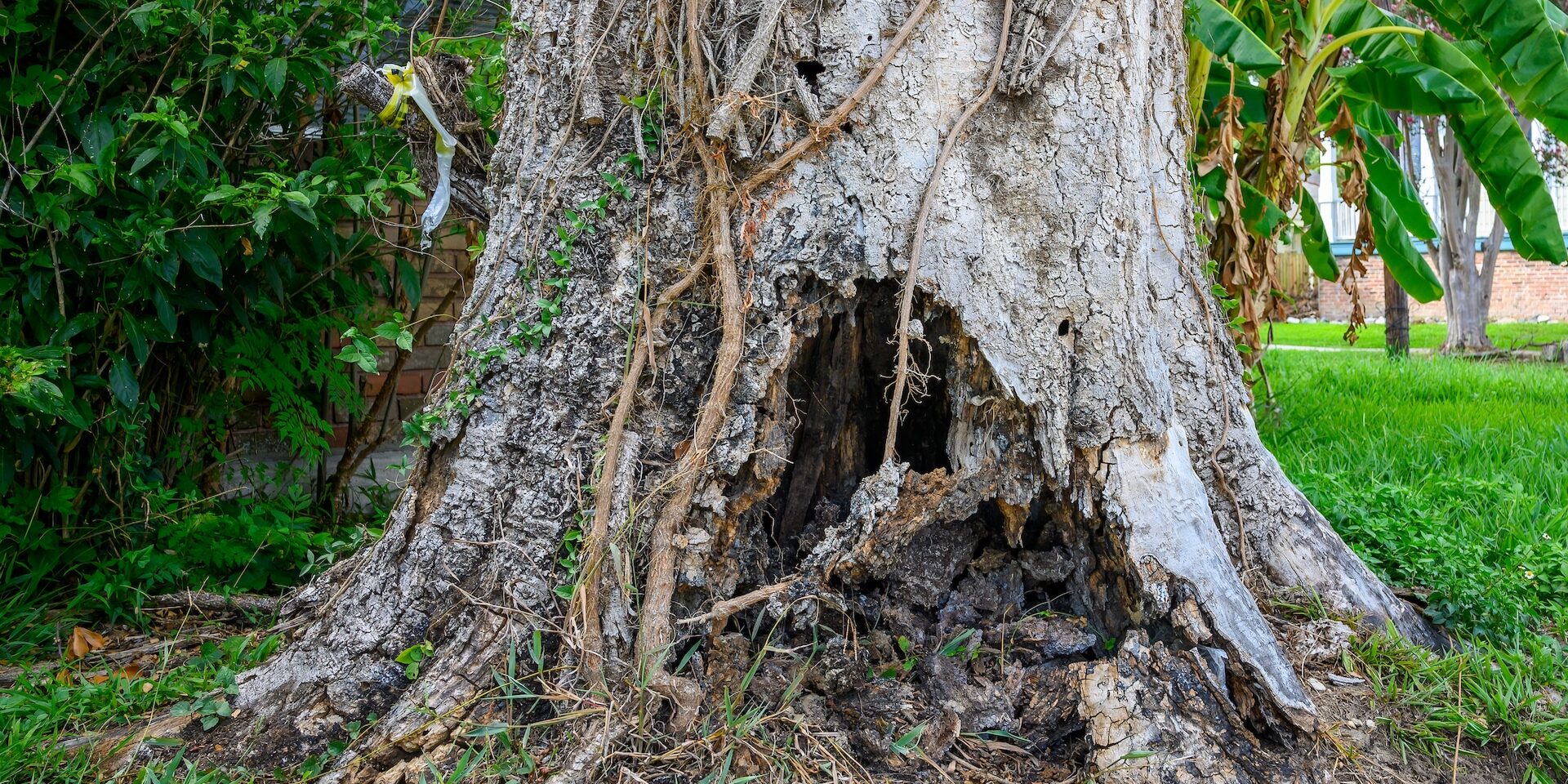
The trees on your property are not only beautiful additions to your landscape but also integral parts of the ecosystem. However, as guardians of your outdoor haven, it’s crucial to recognize and address the potential risks posed by hazardous trees. These trees, compromised by disease, damage, or structural issues, can pose threats to your safety, your property, and the environment. In this article, we delve into the art of identifying hazardous trees and the importance of seeking professional removal to ensure the well-being of your surroundings.
Recognizing Hazardous Trees
Visible Decay: Look for signs of decay such as cavities, mushrooms, or conks on the trunk or branches. Decay weakens the tree’s structure and makes it susceptible to breakage.
Leaning or Unstable Trees: Trees that are leaning significantly or have exposed roots may be unstable and at risk of falling, especially during storms.
Cracks or Splits: Deep cracks or splits in the trunk or branches can indicate structural weaknesses that compromise the tree’s stability.
Dead or Hanging Branches: Dead branches or those hanging precariously are hazardous, as they can fall unexpectedly and cause damage or injury.
Root Issues: Roots that are visibly damaged, decayed, or severed can impact the tree’s stability and ability to withstand wind or storms.
Cankers or Bark Damage: Cankers (sunken areas on the trunk) and extensive bark damage may indicate disease or pest infestations that weaken the tree.
Fungal Growth: The presence of fungi, such as mushrooms or conks, on the trunk or base of the tree is a sign of internal decay.
Proximity to Structures or Utilities: Trees that are too close to buildings, power lines, or other structures can pose a risk if they fall.
V-shaped Branch Unions: Trees with weak branch unions, especially those forming a narrow V-shape, are more prone to splitting.
Sudden Leaf Loss: Rapid leaf loss outside of the tree’s normal shedding season could indicate stress, disease, or root issues.
Why Professional Removal Matters
Safety First: Removing hazardous trees is a dangerous task that requires specialized knowledge, skills, and equipment. Professionals are trained to handle the complexities of tree removal safely.
Risk Mitigation: Tree removal experts assess the situation and determine the best approach to minimize risks to surrounding structures, people, and the environment.
Preserving Surroundings: Professionals take into account the surroundings, ensuring that neighboring trees, plants, and structures are not harmed during the removal process.
Efficient Removal: With the right tools and techniques, professionals can efficiently remove hazardous trees, reducing disruption to your property and daily life.
Stump Removal: Professional removal often includes stump grinding or complete removal, preventing regrowth and creating a clean, safe space.
Appropriate Disposal: Tree removal experts handle the disposal of debris and branches in an environmentally responsible manner, including recycling or repurposing wood.
Florida Tree is the most trusted and top rated Tree & Ground Maintenance company in the area. But don’t take our word for it, see what your neighbors are saying about us and read our reviews.
Hiring a Qualified Tree Removal Service – Florida Tree
Credentials and Insurance: Ensure the tree removal company is licensed, insured, and certified by relevant arboriculture associations. This demonstrates their professionalism and commitment to safety.
Experience and Reputation: Research the company’s reputation and experience in the industry. Read reviews, ask for references, and assess their track record in similar projects.
Free Consultations and Quotes: Reputable companies offer free consultations and detailed quotes. Use this opportunity to discuss your concerns, ask questions, and clarify the removal process.
Safety Protocols: Inquire about the safety protocols and equipment the company uses during tree removal. A commitment to safety reflects a dedication to both their team and your property’s well-being.
Ask About Permits: Depending on your location, you may need permits for tree removal. A professional service should be familiar with local regulations and guide you through the process.
Comprehensive Services: Choose a company that offers a range of services, including tree assessment, removal, stump grinding, and post-removal clean-up.
The Tree Removal Process
Assessment: A certified arborist assesses the tree’s health, condition, and risks. They determine whether removal is necessary and discuss the best approach.
Safety Measures: Professionals take safety precautions, including securing the work area, using appropriate safety gear, and employing techniques to control falling debris.
Tree Removal: Using specialized equipment, the team systematically removes branches and sections of the tree. Care is taken to prevent damage to nearby structures.
Stump Removal: If requested, the stump is ground down or removed entirely, ensuring a smooth and safe surface.
Clean-Up: The removal team cleans up debris and ensures the area is left in a tidy condition.
Hazardous trees are not only a threat to your property and safety but also to the delicate balance of your outdoor environment. Identifying and addressing these trees promptly is a responsible step toward safeguarding your haven. By recognizing the signs of a hazardous tree, understanding the importance of professional removal, and selecting a qualified tree removal service, you contribute to the well-being of your surroundings and create a safer, more inviting outdoor space. Remember, the removal of hazardous trees isn’t just about preventing damage—it’s a proactive measure that fosters a harmonious coexistence between nature and your cherished living spaces.
The Professionals
There are things that you can do to take care of your trees, and understanding tree diseases in Florida. There are many instances that having a professional will be the best move. Arborists are essentially tree doctors, trained in various botanical fields to know what’s wrong with your trees and how (or even if) they can be fixed! You should be sure to check out their credentials, though, and ensure that they are as experienced as they say they are. This way you can make sure that your trees are in the best hands. Give us a call today or complete our online form.

